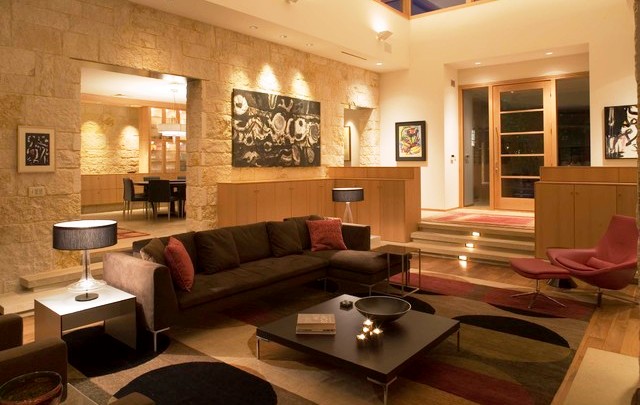Use LED Lights To Conquer The Winter Blues
Posted by Emily Brown on 30th Oct 2018
Now the clocks have gone back, the days will increasingly appear shorter, and the amount of daylight gradually gets lower. The fact that the weather worsens doesn’t help either, causing a lot of people to feel the “winter blues”. This is actually a euphemism for a condition called SAD (Seasonal Affective Disorder), a form of depression linked to the shortening of daylight hours within the autumn and winter.
Symptoms of SAD can include:
- Persistent low mood.
- Feeling irritable.
- Feeling lethargic.
- Sleeping for longer than usual, and finding it hard to get up in the morning.
- Increased appetite (usually for carbohydrates).
A deficiency of sunlight directly correlates with a biochemical imbalance within the pineal gland as the production of melatonin (the hormone which regulates circadian rhythm and induces sleep) is greatly increased. This then causes a disruption in your natural body clock and production of serotonin.
The circadian rhythm is essentially what controls your body clock, including when you go to sleep to when you eat. Without sufficient levels of morning light, the circadian rhythm is not correctly triggered, making the body fail to properly release hormones required to feel wide awake. Thus, this causes lethargy, low energy levels, and sleeping issues.
Get The Royal Treatment
Being a recognised medical condition, numerous studies have gone into looking for the treatments of SAD. The most popular and effective way to ease and help symptoms is by using light therapy, also known as phototherapy.
The Seasonal Affective Disorder Association (SADA) has found that phototherapy treatment is effective for 85% of individuals who have been diagnosed with the condition.
You can go to clinics for this treatment, however, this can be incredibly costly, so most people tend to opt for a lightbox which is a small box that emits high-intensity artificial light. As these have become more popular, different varieties have been created including the LED light box.
Essentially, you simply sit in front of, or next to the lightbox, allowing the light to indirectly pass through your eyes. You do this in timed sessions and the length depends on the lux of the product you use.
On top of this, LED light therapy is incredibly beneficial for the skin, being used by many celebrities to brighten and tighten the skin. It has been proven to ease skin conditions and overall improve acne.
However, if you do use this treatment to help with SAD, please consult your general practitioner as your symptoms may be related to another underlying medical condition.
What Can We Do To Help?
This is where our LEDs come into play in everyday life. It is a little-known fact that they actually closely replicate natural sunlight, just without the harmful UV rays. They also come in different colour temperatures, which is great for different areas of the home.
For example, we recommend cool white (6000K) for bathrooms and kitchens, and then warm white (3000K) for living areas and bedrooms.
This is simply because the clean and clinical light from the shade of cool white stimulates the ipRGCs within the eye, that gives signals to the body that it is daytime. This boosts awareness and productivity. So, for those areas that you need a little extra concentration, fit a cool white bulb in.
On the contrary, the warm white light (3000K) is best for those places that you want to relax and wind down. This is why it is great for the living area and bedroom because warm white spectrally avoids stimulating the ipRGCs. This is due to them not being sensitive to redder colours, so it tells the brain it is darker and dimmer.
This is virtually how LEDs regulate your natural body clock. It is important to note that stabilising the circadian rhythm is crucial for general well-being of individuals, as it:
- Improves sleep.
- Promotes healthy activity.
- Improves mood and behaviour.
- Regulates eating pattern.
- Increases memory and aids faster cognitive processing.
Or, if you want both warm and cool white, try out an RGBW bulb, or RGBW strip lights. These are controllable via a remote control, so come night time you can select a warmer white within the kitchen or bathroom area.
Additionally, they are usually dimmable via the same remote, allowing you to control the intensity of the light. This way you can create the perfect lighting based on the time of day and your mood.
If you have any further questions about LEDs in the home, and the benefits, feel free to get in touch with one of our customer services advisors on 0116 321 4120. Alternatively, you can reach us on our email at cs@wled.co.uk.
Receive regular updates from us and give us a like on our Facebook, and follow us on Twitter and Instagram.







